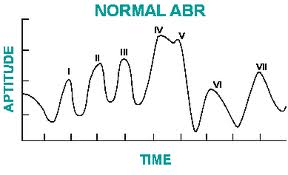by Brian Taylor, Editor-at-Large

Brian Taylor, AuD
Although the Corona virus is a life-threatening condition and hearing care is deemed non-essential service in many places, there are aspects of the pandemic germane to audiology. Recently, the Washington Post reported on the rise in Covid-19 cases in American meatpacking plants. In the article, epidemiologists speculate the high levels of noise on meatpacking floors require workers to stay within a few feet of one another in order to communicate. Their proximity on the factory floor because of the noise may be a contributing factor in the rapid spread of the virus in many meatpacking plants.
For a virus that didn’t exist just a few months ago, it is remarkable to see the first hearing-related studies begin to bubble up in the peer reviewed journals. Clinically, Covid-19 presents as a respiratory illness, there is one reported case of a patient in Thailand who reported hearing loss coinciding with the onset of the virus. The report can be found here. Another study, published in the American Journal of Otolaryngology, examined the otoacoustic emissions of 20 patients diagnosed with Covid-19 with none of the known symptoms.
Results of the study showed these 20 patients had worse high frequency pure tone thresholds and lower OAE amplitudes compared to a Covid 19-free control group – an early trend that warrants further investigation.
Hearing Healthcare in the Covid-19 Era
In many parts of American healthcare, Covid-19 has taken troublesome conditions we’ve been dealing with for years, shined a bright light on them, and created new urgency around finally addressing them. One example is older adults, prone to hearing loss and complications of the virus, trying to effectively communicate in an urgent care hospital setting. A brief note in Nature urged professionals to devise universal signing system when communicating to the public about the virus. The authors found that 15 or more different signs are currently being used to designate the coronavirus in countries affected by the pandemic. Further, the May issue of Hearing Review offers up a study that examined how opaque surgical masks degrade speech understanding ability of patients, an especially troubling finding given the prevalence of Covid-19 among older adults.
Others have quickly published ideas on how to efficiently ramp up telehealth services in a hearing clinic. Two articles published online by The Hearing Journal provide some sensible guidance on providing contactless hearing testing and hearing aid fitting. Swanepoel and Hall provide valuable insight on contactless workflow, while Manchaiah and Beukes offer a step-by-step guide on how to get internet-based services up and running in a clinic. Also, the American Academy of Otolaryngology provides a series of podcasts on several issues related to medical practice during the Covid 10 pandemic, including sensible guidance on using telemedicine in an ENT clinic.
As clinics embrace audiology-at-a-distance, several groups are providing valuable guidance on personal safety and effective communication with patients who may be more at-risk for contracting the virus. The Canadian Academy of Audiology has published this guide to communicating with persons with hearing loss and AAA has posted information on telehealth codes as well as this upcoming webinar on supporting patients remotely – a course that dovetails with another recent 2-part tele-audiology webcast at Audiology Online, conducted by Samantha Robler.
Finally, we begin to think re-opening our clinics, two esteemed medical journals offer rational considerations to help all of us adapt to a new normal. The New England Journal of Medicine provides an evidence-based opinion on what both the private and public sectors must do to “crush the curve”, while The Lancet offers logical guidance on overcoming pitfalls in judgment associated with coping with a once-in-lifetime event that threatens the life and livelihood of virtually everyone on the planet.
Stay safe, be vigilant; let logic and scientific principles overcome fear.








Please model good practices for audiologists. Your picture of a masked audiologist is demonstrating the way NOT to do it. Audiology patients need to see your mouth. In the future please show masks that show mouths!
Thank you from all of us who depend on speechreading to help us hear whether we do it consciously or unconsciously.
You are right. They would wear the see through plexi face shields which offer very good protection.